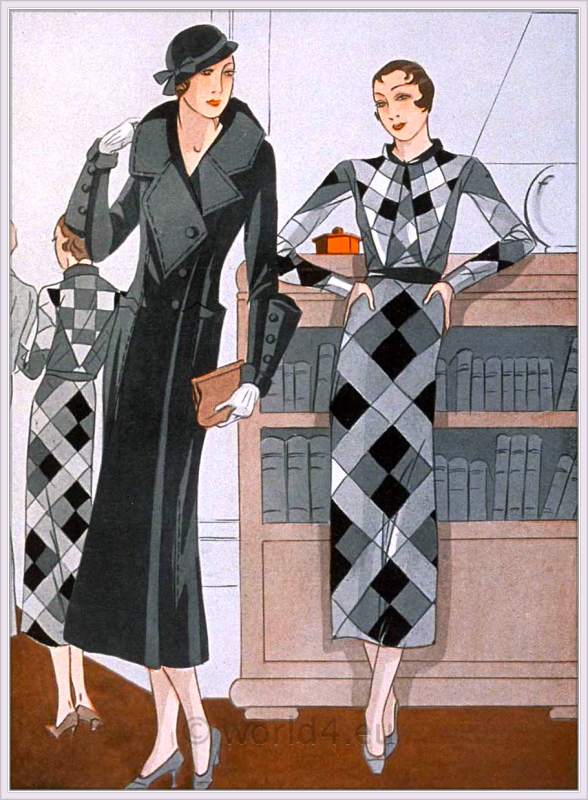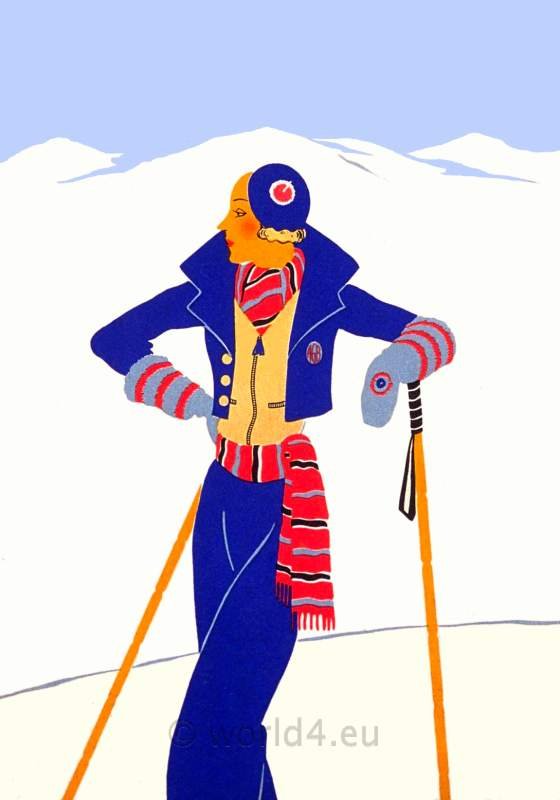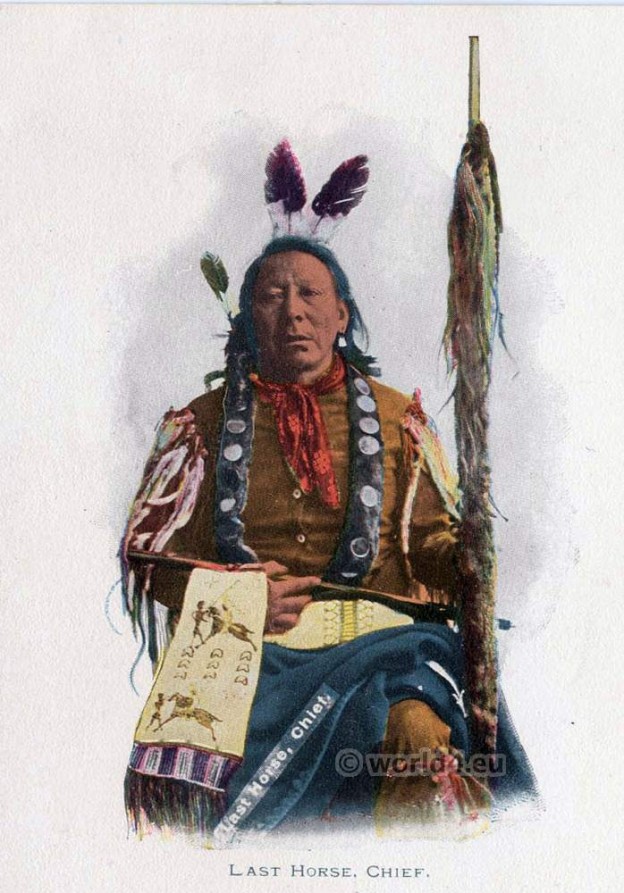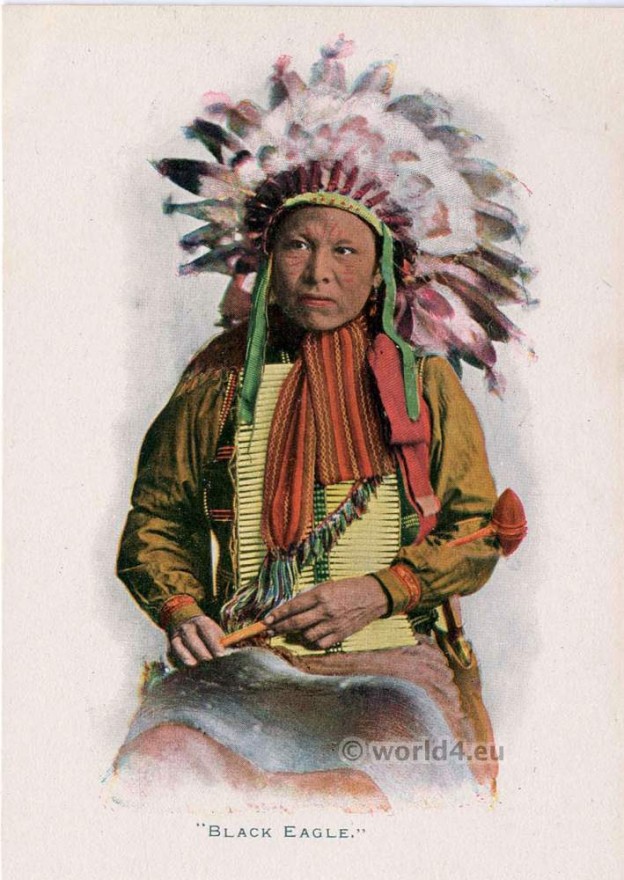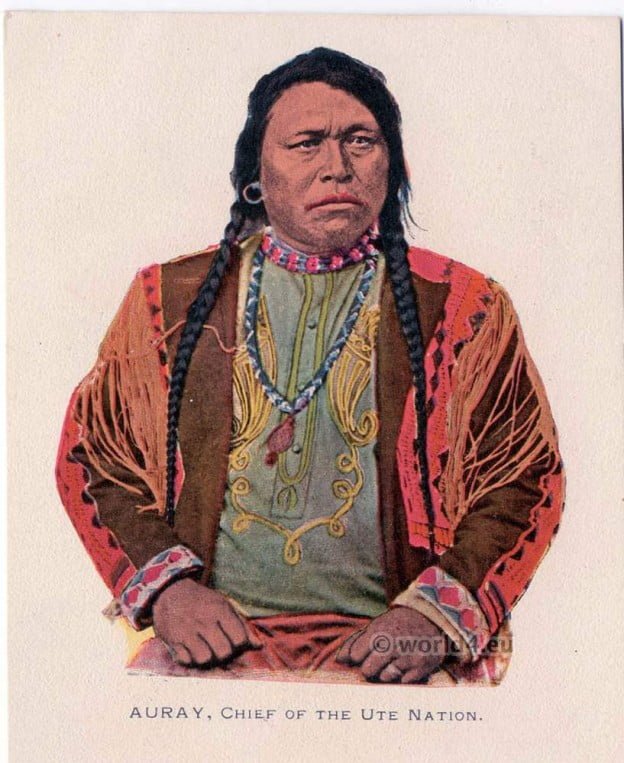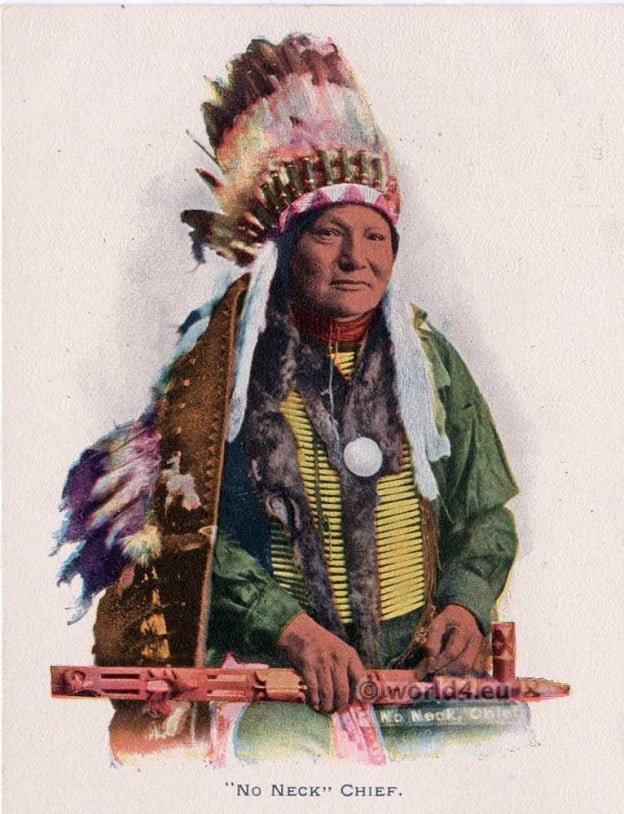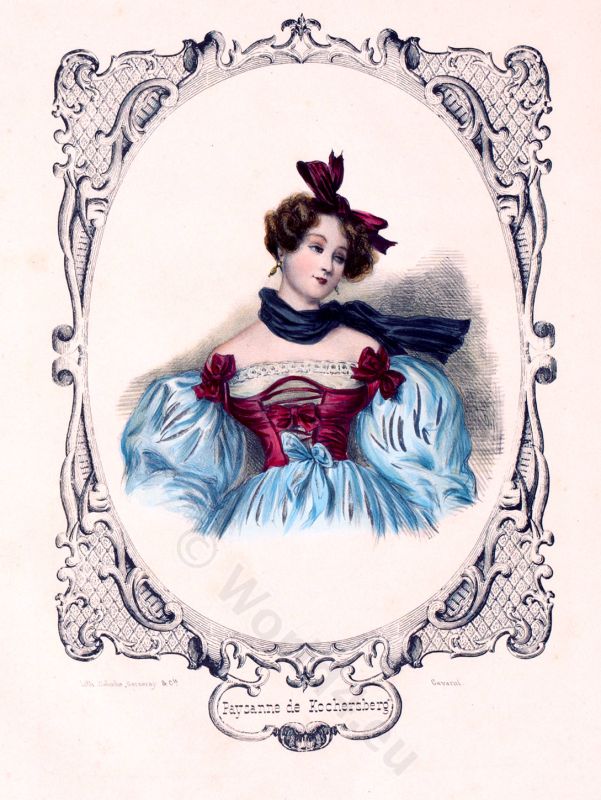Robe en lainage fantaisie à grand écossais trois tons. Col et ceinture de velours. Effet de pèlerine au corsage formant deux pointes au devant et une derrière.
Création de Couturier Lucile Paray. Art deco fashion 1933.
Création de Couturier Lucile Paray. 1930s French art deco sports costume. Feuillets de l’élégance féminine. January 1933. Costume by couturier Lucile Paray.
Sioux Squaw and Papoose. Native Americans.
Sioux Squaw and Papoose (baby, child). First Nation. Native Americans.
Last Horse, Oglala Sioux Chief. Native Americans.
Last Horse, Oglala Sioux Chief. Native Americans.
Short Bull, Chief of Brule Lakota, Sioux tribe.
Short Bull, Indian name Tatanka Ptechela was a Brulé (Oglala) Lakota Sioux medicine man who was one of the most prominent leaders in the 1890s Ghost Dance Movement.
Sioux Black Eagle wearing an eagle feather bonnet.
Sioux Black Eagle. He is wearing an eagle feather bonnet.
Auray, Chief of the Ute Nation. Native American people of the Great Basin.
The Ute lived in the vast landscapes of the Great Basin and subsisted almost exclusively on big game hunting.
Hunkpapa Sioux chief “No Neck” who surrendered with Crazy Horse.
The Hunkpapa or Húŋkpapȟa (formerly often rendered as Honkpapa) are a North American Indian tribe and belong to the Lakota of the Sioux language family.
Alsace empire costume from Kochersberg in 1840.
Romantic costume of a woman from Kochersberg, Alsace
German peasant of Duchy of Saxe-Altenburg.
German peasant of Duchy of Saxe-Altenburg, 1840.

